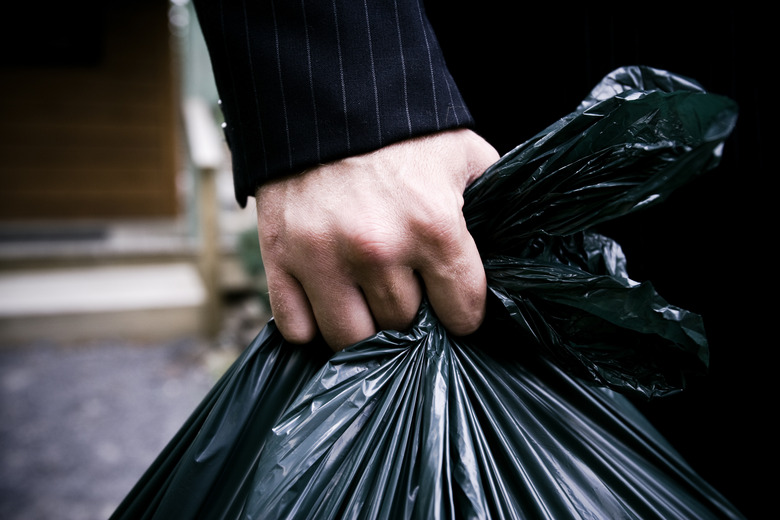How To Compost Leaves In A Plastic Bag
Being full of minerals, leafmold enriches garden soil. The problem with composting large numbers of leaves is they tend to look untidy. They also have a habit of blowing away. Plastic bag composting may help speed up the process, and it certainly keeps the leaves in one place.
What You Need
What You Need
The basics for bag composting are, of course, bags, specifically trash bags or sacks and the stronger, the better. To stop the bags full of leaves from rolling about, you'll also need something to secure them down, which can be as simple as tent pegs or even just a couple of rocks in the bottom. A rake to collect the leaves in the first place also comes in useful. Compost will form faster and be more balanced if you add some nitrogen-rich material ("green" materials in composting terminology) to the leaves. Examples include lawn clippings, manure and vegetable waste from the kitchen.
Time Frame
Time Frame
Leaves are not the quickest items to decompose, especially if you are composting them by themselves. The leafmold might be ready within a few months, but it is more likely that you'll need to wait a year, possibly longer.
Procedure
Procedure
Poke a few holes in the bottom of each trash bag with a knife, to allow drainage, ventilation and for decomposing organisms to enter. Gather up your leaves, mix them with the high-nitrogen material, if you have any, at about the rate of 4 parts leaves to 1 part green material, and pack them tightly into the bags. Add a shovel-full of garden soil or compost, which should contain plenty of the microorganisms required for composting.
If it hasn't been raining and the leaves are dry, water them until they are slightly damp but not soaking wet. Tie the tops of the bags, secure them down in a shady part of your garden and leave. Note that it is advisable to place the bags on soil, rather than rock or concrete. This allows creatures to move up from the soil and prevents possible staining from the leafmold juice.
Speeding up the Process
Speeding up the Process
If you are in a hurry to get your leafmold, there are a few tricks to encourage them to compost a little faster. Adding green materials, as mentioned previously, helps, as does shredding the leaves before packing them into the bags. Stirring the leaves a couple of times a week aerates them, providing the decomposers with more oxygen
Cite This Article
MLA
Willson, Judith. "How To Compost Leaves In A Plastic Bag" sciencing.com, https://www.sciencing.com/compost-leaves-plastic-bag-4213/. 24 April 2017.
APA
Willson, Judith. (2017, April 24). How To Compost Leaves In A Plastic Bag. sciencing.com. Retrieved from https://www.sciencing.com/compost-leaves-plastic-bag-4213/
Chicago
Willson, Judith. How To Compost Leaves In A Plastic Bag last modified March 24, 2022. https://www.sciencing.com/compost-leaves-plastic-bag-4213/
